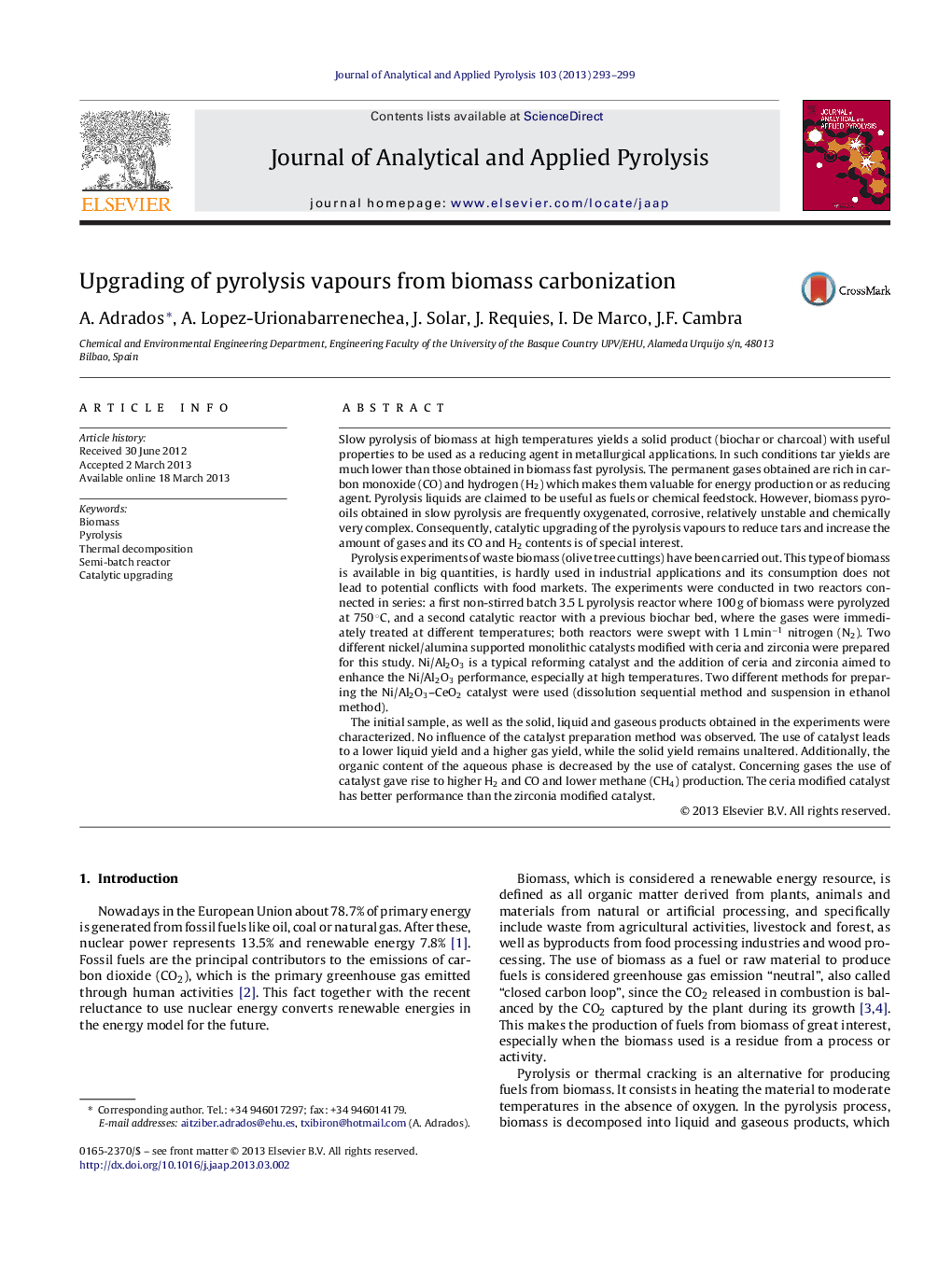| کد مقاله | کد نشریه | سال انتشار | مقاله انگلیسی | نسخه تمام متن |
|---|---|---|---|---|
| 1197200 | 1492974 | 2013 | 7 صفحه PDF | دانلود رایگان |

• Pyrolysis of olive tree cuttings in two reactors connected in series.
• First step for obtaining metallurgical grade biochar.
• Second step for thermal and catalytic upgrading of pyrolysis vapours.
• Ni/Al2O3–CeO2 and Ni/Al2O3–ZrO2 catalysts were tested.
• Ni/Al2O3–CeO2 gave rise to less tars and higher H2 and CO.
Slow pyrolysis of biomass at high temperatures yields a solid product (biochar or charcoal) with useful properties to be used as a reducing agent in metallurgical applications. In such conditions tar yields are much lower than those obtained in biomass fast pyrolysis. The permanent gases obtained are rich in carbon monoxide (CO) and hydrogen (H2) which makes them valuable for energy production or as reducing agent. Pyrolysis liquids are claimed to be useful as fuels or chemical feedstock. However, biomass pyro-oils obtained in slow pyrolysis are frequently oxygenated, corrosive, relatively unstable and chemically very complex. Consequently, catalytic upgrading of the pyrolysis vapours to reduce tars and increase the amount of gases and its CO and H2 contents is of special interest.Pyrolysis experiments of waste biomass (olive tree cuttings) have been carried out. This type of biomass is available in big quantities, is hardly used in industrial applications and its consumption does not lead to potential conflicts with food markets. The experiments were conducted in two reactors connected in series: a first non-stirred batch 3.5 L pyrolysis reactor where 100 g of biomass were pyrolyzed at 750 °C, and a second catalytic reactor with a previous biochar bed, where the gases were immediately treated at different temperatures; both reactors were swept with 1 L min−1 nitrogen (N2). Two different nickel/alumina supported monolithic catalysts modified with ceria and zirconia were prepared for this study. Ni/Al2O3 is a typical reforming catalyst and the addition of ceria and zirconia aimed to enhance the Ni/Al2O3 performance, especially at high temperatures. Two different methods for preparing the Ni/Al2O3–CeO2 catalyst were used (dissolution sequential method and suspension in ethanol method).The initial sample, as well as the solid, liquid and gaseous products obtained in the experiments were characterized. No influence of the catalyst preparation method was observed. The use of catalyst leads to a lower liquid yield and a higher gas yield, while the solid yield remains unaltered. Additionally, the organic content of the aqueous phase is decreased by the use of catalyst. Concerning gases the use of catalyst gave rise to higher H2 and CO and lower methane (CH4) production. The ceria modified catalyst has better performance than the zirconia modified catalyst.
Journal: Journal of Analytical and Applied Pyrolysis - Volume 103, September 2013, Pages 293–299